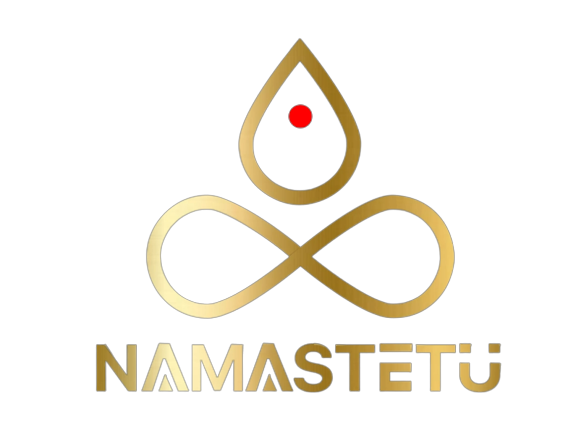In today’s digital landscape, businesses are constantly seeking effective ways to reach their target audience and drive growth. Two powerful strategies that have emerged as cornerstones of online marketing are Pay-Per-Click (PPC) advertising and Search Engine Marketing (SEM). But what exactly are these techniques, and how do they fit into the broader context of Search Engine Optimization (SEO) and digital marketing? This comprehensive guide will demystify PPC and SEM, exploring their relationship with SEO marketing and providing insights into how businesses can leverage these tools for success.
Understanding PPC and SEM: The Basics
Pay-Per-Click (PPC) Advertising: PPC is a digital advertising model where advertisers pay a fee each time their ad is clicked. Essentially, it’s a way of buying visits to your site rather than earning them organically. The most common type of PPC is search engine advertising, where businesses bid for ad placement in a search engine’s sponsored links when someone searches for a keyword related to their business offering.
Search Engine Marketing (SEM): SEM is a broader term that encompasses various strategies to increase a website’s visibility in search engine results pages (SERPs). It includes both paid strategies like PPC and organic strategies like SEO. While some marketers use SEM and PPC interchangeably, it’s important to understand that SEM is the overarching strategy that can include multiple tactics.
The Relationship Between PPC, SEM, and SEO
While PPC and SEM focus on immediate visibility through paid advertising, SEO (Search Engine Optimization) is about improving a website’s organic search rankings. Here’s how they relate:
- PPC provides immediate visibility but requires ongoing investment.
- SEO offers long-term benefits but takes time to show results.
- SEM combines both approaches for a comprehensive search marketing strategy.
A well-rounded digital marketing approach often incorporates all these elements, leveraging the strengths of each to maximize online presence and drive conversions.
Key Components of PPC Campaigns
Successful PPC campaigns involve several crucial elements:
- Keyword Research: Identifying the right keywords that your target audience is searching for.
- Ad Creation: Crafting compelling ad copy that encourages clicks.
- Landing Page Optimization: Ensuring the page users land on after clicking your ad is relevant and conversion-optimized.
- Bid Management: Strategically setting and adjusting bids for keywords to maximize ROI.
- Quality Score: Understanding and improving Google’s rating of the quality and relevance of your keywords and PPC ads.
SEM Strategies Beyond PPC
While PPC is a significant part of SEM, there are other strategies involved:
- Display Advertising: Visual ads displayed on websites within an advertising network.
- Remarketing: Targeting ads to users who have previously interacted with your website.
- Shopping Ads: Product-based advertisements that appear in search results.
- Video Advertising: Promotional content that appears before or during online videos.
The Role of SEO in SEM
SEO plays a crucial role in SEM by improving organic search visibility. Key aspects of SEO include:
- On-Page SEO: Optimizing individual web pages for specific keywords and improved search engine rankings.
- Off-Page SEO: Building the authority of your website through external factors like backlinks.
- Technical SEO: Ensuring your website’s structure and backend elements are optimized for search engines.
- Local SEO: Optimizing for location-based searches, crucial for businesses with physical locations.
Essential SEO Techniques for SEM Success
To maximize the effectiveness of your SEM efforts, consider these SEO strategies:
- Keyword Research: Identifying and targeting the right keywords is crucial for both SEO and PPC success.
- Content Marketing: Creating high-quality, relevant content that addresses user needs and incorporates target keywords.
- Link Building: Acquiring high-quality backlinks from reputable websites to boost your site’s authority.
- Meta Tags Optimization: Crafting compelling title tags and meta descriptions to improve click-through rates from search results.
- Page Speed Optimization: Ensuring your website loads quickly on all devices to improve user experience and search rankings.
Tools for PPC, SEM, and SEO Success
Leveraging the right tools can significantly enhance your digital marketing efforts:
- Google Ads: The primary platform for running PPC campaigns on Google’s search network.
- Google Search Console: A free tool providing insights into your website’s search performance.
- SEO Tools: Platforms like SEMrush, Ahrefs, or Moz for comprehensive SEO analysis and tracking.
- SEO Analytics: Tools like Google Analytics for tracking website traffic and user behavior.
Measuring Success in PPC and SEM
Key metrics to track include:
- Click-Through Rate (CTR): The percentage of people who click on your ad after seeing it.
- Conversion Rate: The percentage of visitors who complete a desired action on your site.
- Cost Per Click (CPC): The amount you pay for each click on your ad.
- Return on Ad Spend (ROAS): The revenue generated compared to your advertising costs.
- Organic Search Rankings: Your website’s position in unpaid search results for target keywords.
The Impact of Google Algorithm Updates
Staying informed about Google Algorithm Updates is crucial for both PPC and SEO success. These updates can significantly affect search rankings and ad performance. Some key considerations include:
- Mobile-First Indexing: Prioritizing mobile-friendly websites in search results.
- Core Web Vitals: Focusing on user experience metrics like loading speed, interactivity, and visual stability.
- BERT and MUM: Natural language processing updates that improve Google’s understanding of search intent.
Advanced SEO Techniques for Competitive Edge
To stay ahead in the competitive digital landscape, consider implementing these advanced SEO techniques:
- Schema Markup: Implementing structured data to help search engines better understand your content.
- Voice Search Optimization: Optimizing for conversational queries as voice search becomes more prevalent.
- Mobile SEO: Ensuring your website is fully optimized for mobile users, including responsive design and accelerated mobile pages (AMP).
The Role of Content in PPC and SEO
High-quality content is the backbone of both PPC and SEO strategies:
- For PPC: Creating compelling ad copy and relevant landing pages that convert.
- For SEO: Developing comprehensive, valuable content that addresses user intent and incorporates target keywords naturally.
Local SEO and Its Importance
For businesses with physical locations or serving specific geographic areas, Local SEO is crucial:
- Google My Business Optimization: Ensuring your business listing is complete and accurate.
- Local Keywords: Incorporating location-based keywords in your content and meta tags.
- NAP Consistency: Maintaining consistent Name, Address, and Phone number across all online platforms.
The Future of PPC and SEM
As digital marketing evolves, several trends are shaping the future of PPC and SEM:
- Artificial Intelligence: AI-powered tools for bid management and ad optimization.
- Visual Search: Optimizing for image-based searches as this technology becomes more prevalent.
- Augmented Reality Ads: Integrating AR experiences into digital advertising campaigns.
Choosing the Right SEO Agency or PPC Specialist
When seeking professional help, consider the following:
- Experience: Look for an SEO agency or SEO specialist with a proven track record in your industry.
- Transparency: Choose partners who provide clear reporting and communicate openly about their strategies.
- Customization: Avoid one-size-fits-all approaches; your strategy should be tailored to your specific business goals.
Integrating PPC and SEO for Maximum Impact
While PPC and SEO are often treated separately, integrating these strategies can lead to synergistic benefits:
- Use PPC data to inform SEO strategies and vice versa.
- Dominate search results by appearing in both paid and organic listings.
- Leverage remarketing to re-engage users who found your site through organic search.
Conclusion:
In the ever-evolving digital landscape, understanding and effectively implementing PPC and SEM strategies is crucial for business success. By combining the immediate impact of PPC with the long-term benefits of SEO, businesses can create a powerful online presence that drives traffic, leads, and conversions.
Ready to take your digital marketing to the next level? Namastetu India is here to help. Our team of experienced SEO specialists and PPC experts can craft a customized strategy to boost your online visibility and drive real results. Whether you need comprehensive SEO services, targeted PPC campaigns, or a full-scale SEM strategy, we have the expertise to help your business thrive in the digital world. Contact Namastetu India today for a free consultation and discover how we can transform your online presence.
FAQs About What is PPC and SEM Marketing
What’s the difference between SEO and SEM?
SEO focuses on improving organic search rankings, while SEM encompasses both paid (PPC) and organic (SEO) strategies to increase visibility in search results.
How long does it take to see results from SEO?
SEO is a long-term strategy, typically taking 3-6 months to see significant results, depending on factors like competition and current site performance.
Is PPC or SEO better for my business?
Both have their merits. PPC offers immediate visibility but requires ongoing investment, while SEO provides long-term benefits but takes time to show results. Many businesses benefit from a combined approach.
How often should I conduct an SEO audit?
It’s recommended to perform a comprehensive SEO audit at least once a year, with regular smaller checks throughout the year to monitor performance.
What are the most important SEO ranking factors?
Key factors include high-quality content, relevant backlinks, user experience, mobile-friendliness, and page speed, among others.




